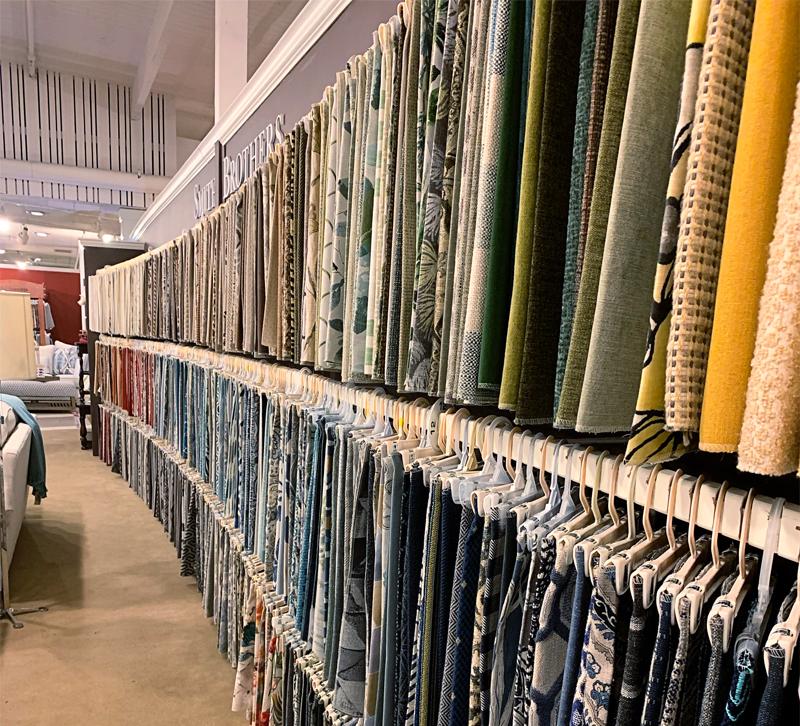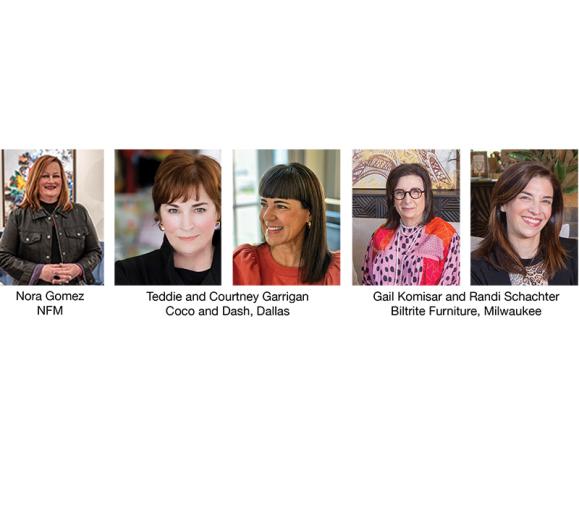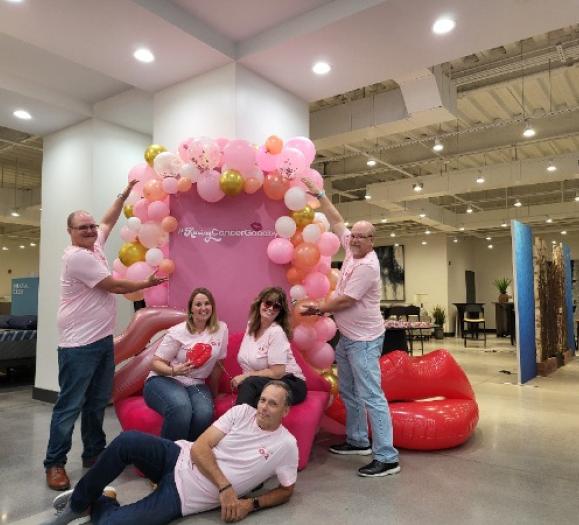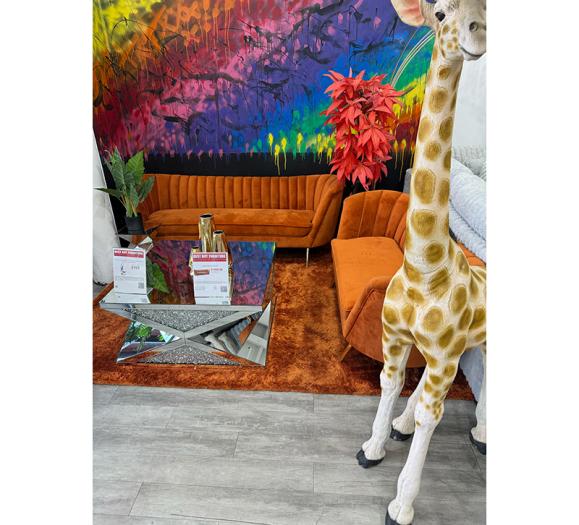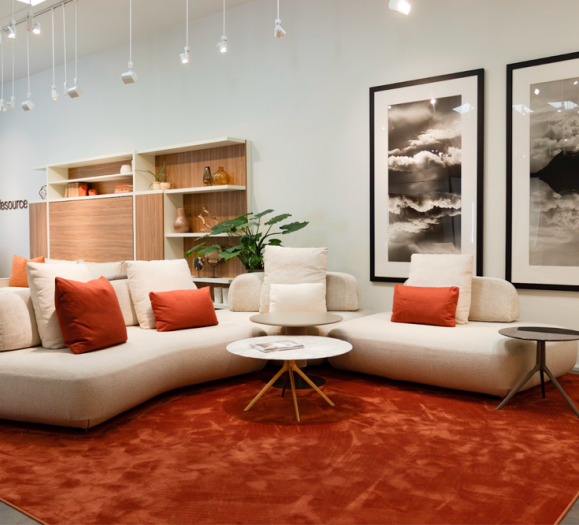In the furniture business, the word custom has typically carried a certain connotation, most often used to describe exquisite, bench-built furnishings specified by elite designers for their masters-of-the-universe clients.
That rarified world still exists, but where once designers could choose among hundreds of casegoods factories that were capable of producing true custom goods, today there are maybe 10 casegoods factories of that ilk left in North Carolina.
“A lot of people still have custom upholstery capabilities if they are willing to invest a bit in the handling and management. But there are very, very few casegoods factories left in the U.S. with the ability to produce a custom piece of wood furniture,” relates Alex Shuford, Chief Executive Officer of the Rock House Farm family of brands which includes Century Furniture, Hickory Chair and the recently acquired Curate Home. “Truly professional casegoods production facilities are rare. A lot of the people we compete with just buy product from factories overseas that they don’t own. But it’s really hard to get a factory that’s 6,000 miles away, that you don’t control, to do it right and do it one-off.”
Much like American politics, “the furniture industry continues to polarize,” Shuford theorizes, and these days, the majority of business is accomplished at the extremes, whether from the promotional and good to the sheer luxury end of the market. “If you’ve got money and you want it the way you want it, there are simply fewer places to go today,” he says. “So companies like ours that are still doing true custom are doing a lot more of it.”
Indeed, Shuford shares, “We do more pure custom today than we’ve ever done. We track every unique design individually and we’ve got one particular dining room table that we’ve customized — creating a wholly changed table — more than 200 times. If we repeat the exact same customization, we don’t add another number. This means the actual number of custom-made iterations we’ve produced off that table is probably 100 more than that.”
Custom with a ‘Big’ C
Of course, the word custom means different things to different people, depending on which end of the price spectrum they operate. Shuford has shorthand for it: Big “C,” Little “C.” Big C refers to a product that was not conceived as a configurable design and is made to the exact specifications of a designer and/or client. For example, the designer might want to change the actual size of the piece, add or subtract doors or opt for a different veneer species entirely. Little C, on the other hand, is all about configurability. And that’s where, the executive believes, the confusion starts.
“We’ve got a sofa program, for example, that has thousands of possible permutations, but we don’t consider it Big C custom,” he says, “because all those permutations are built into the product logic from day one.”
Certainly, in an effort to satisfy consumers and differentiate their companies, there are a growing number of furniture makers touting “custom” programs now, but the majority of these offerings still fall under the Little C heading.
“Configurability has become an aspect that a lot of companies today, including many Asian manufacturers, have begun to build into their product,” he describes. “Think of a sofa that has four arm choices, that you can get with a skirt or an exposed leg. Those aspects are built into the product logic from the development standpoint and are meant for the customer to change to suit. The analogy I use is that when you go to an auto dealership you can pick the color of your car and whether you want leather or cloth interior, four-wheel drive or two-wheel drive and so on. But if you ask Volvo to make your XC90 six inches longer, they are going to look at you askance. Or, if you say, ‘I really like this car, but it’s got a round steering wheel, and I prefer oval,’ they will say, ‘Well, we just don’t do that.’”
Unlike Century and its high-end brethren which offer both Big C and Little C capabilities, companies at the lower end of the spectrum “will come out with, let’s say, a bed that comes in three heights, a low headboard, a medium headboard and a high headboard at 50, 60 and 70 inches. They have already got the logic built into their MRP system and they are stocking parts for it ready to go. But if you said to them, ‘I don’t want 50, 60 or 70; I want my bed to be 57 inches tall,’ they say, ‘Sorry, we don’t do that.’ That’s the difference between Big C and Little C, and I think that Big C custom is still a different thing that only North American companies are comfortable with.”

Pure custom requires more than superior manufacturing expertise to get right. The ability to specify truly customized product remains an art unto itself. Interior designer, author and business consultant Mary Knackstedt says interior designers should have great respect for furniture product designers. “When you start altering a piece of furniture you have to be very careful and have a good understanding of how far you can really go before you start asking for changes,” she says. “You need to really understand the capabilities of the factory and the craftspeople you’re dealing with. Bear in mind too that that the product designer — the artist — who created that piece you want to change may have gone through dozens of iterations before it was ever considered perfect in the first place. Interior designers are trained to be interior designers; we do not hold masters degrees in furniture design. That’s why I strongly encourage all interior designers that I counsel to send modifications on any piece to someone who does nothing but furniture design for input before asking a manufacturer to make the changes. You save yourself a lot of trouble in the end and also ensure that you can have the piece produced at a reasonable and appropriate price.”
Customization is a complex process and requires a good understanding of the manufacturing process for designers to really lean into all that’s possible. “When you call us and say, ‘I love this sofa that comes standard at 88 inches, but I want it 94, and I need the arm to be just a little bit bigger,’ we say, ‘Sure, let us give you a quote,’ and we give you a price quote and a lead-time quote. It’s going to take longer to produce the item for you because it is not going to be in the normal product flow,” Rock House Farm’s Shuford explains. “Then, it will go to a special cell or a special kind of production line in the factory, because everything has to be double-checked and triple-checked, and we literally have to make patterns for it just as we would do in new product development. Casegoods work much the same way. We would sketch it for you and send that for approval, and again, the piece would go through almost a complete product development process with all the engineering work amortized over a unit quantity of one.”
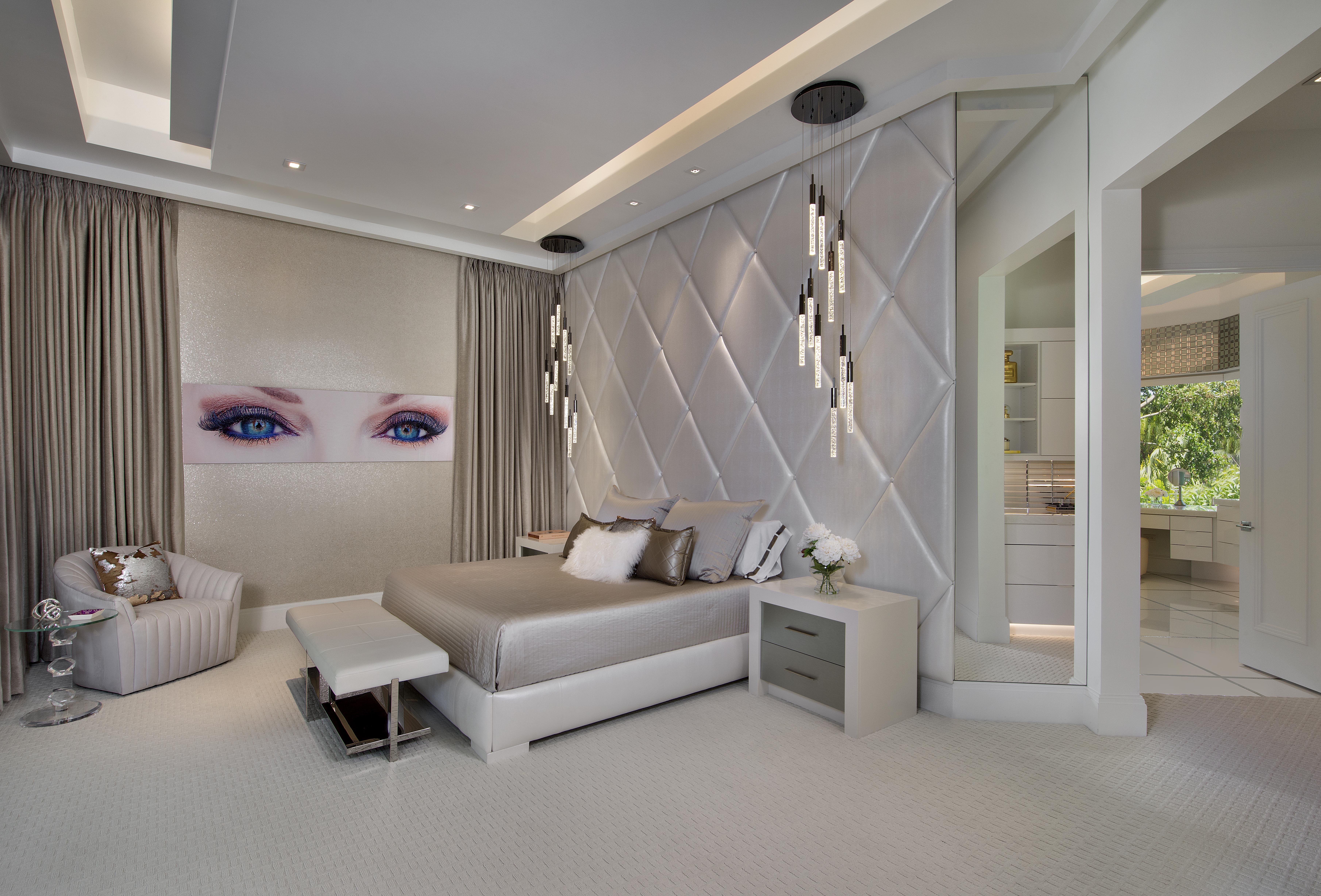
Though there is really nothing that keeps Asian suppliers or low-end competitors from doing the same thing, that kind of process “is disruptive to a factory that has been set up to produce repetitive product,” Shuford adds. Conversely, “our upholstery factories regularly make ones and twos of things, so we’ve got a lot of that capability pre-wired, while our casegoods factory is really set up to make tens. So, it’s not that inefficient for us to produce just one of something. However, if we were set up to make hundreds of a product at a time, and then wanted to drop down to make just one, simply keeping a handle on the process, on where the parts are, and making sure that everything comes together in the cabinet room and that the finishing is correct gets really difficult.”
Additionally, he says, “A U.S. factory will likely communicate with a client more on a custom project. You’re on the phone with them, customer service may go down to the factory to take a look three, four, five times, and then call the client asking, ‘Is it okay if we do it this way?’ That kind of communication becomes much more difficult with a time change and a language barrier.”
Serve and Protect
For consumers trained to expect instant gratification, good is often good enough. “It may not be quite what they want, but the industry has gotten a lot better at producing configurable pieces of high-end furniture, where you can pick a cabinet and choose the hardware you put on it, as well as the finish,” Shuford continues. “It’s not truly a custom piece. It’s more that we held it ready to go and then just added a few finishing touches.”
Still, better-end retailers are focusing more of their business on custom programs, and it’s not just because the ability to customize a piece allows them to give their customers exactly what they want. For the retailer, there’s an added benefit: Consumers are more apt to order custom furnishings from a brick-and-mortar store, and that helps insulate those merchants from the onslaught of online competition.
“That’s the whole reason we’re doing what we’re doing,” says Eric Easter, President of Indianapolis-based Top 100 retailer Kittle’s Furniture. “We think custom programs build a bit of a moat around us that protects us from the web. While you can have little swatches sent to you by e-commerce retailers, I think there’s a smaller percentage of consumers who are comfortable making changes to a piece they see online. They really want to see it and touch it, and that’s why we have such a strong custom presence.” (Nearly 55 percent of all the retailer’s business is accomplished via special order.) “We tell our customers, ‘Look you can have anything you want on our showroom floor; we think these products are great looking and that’s why we put them here. But if you want something different, give us 30 days and you can have it.”
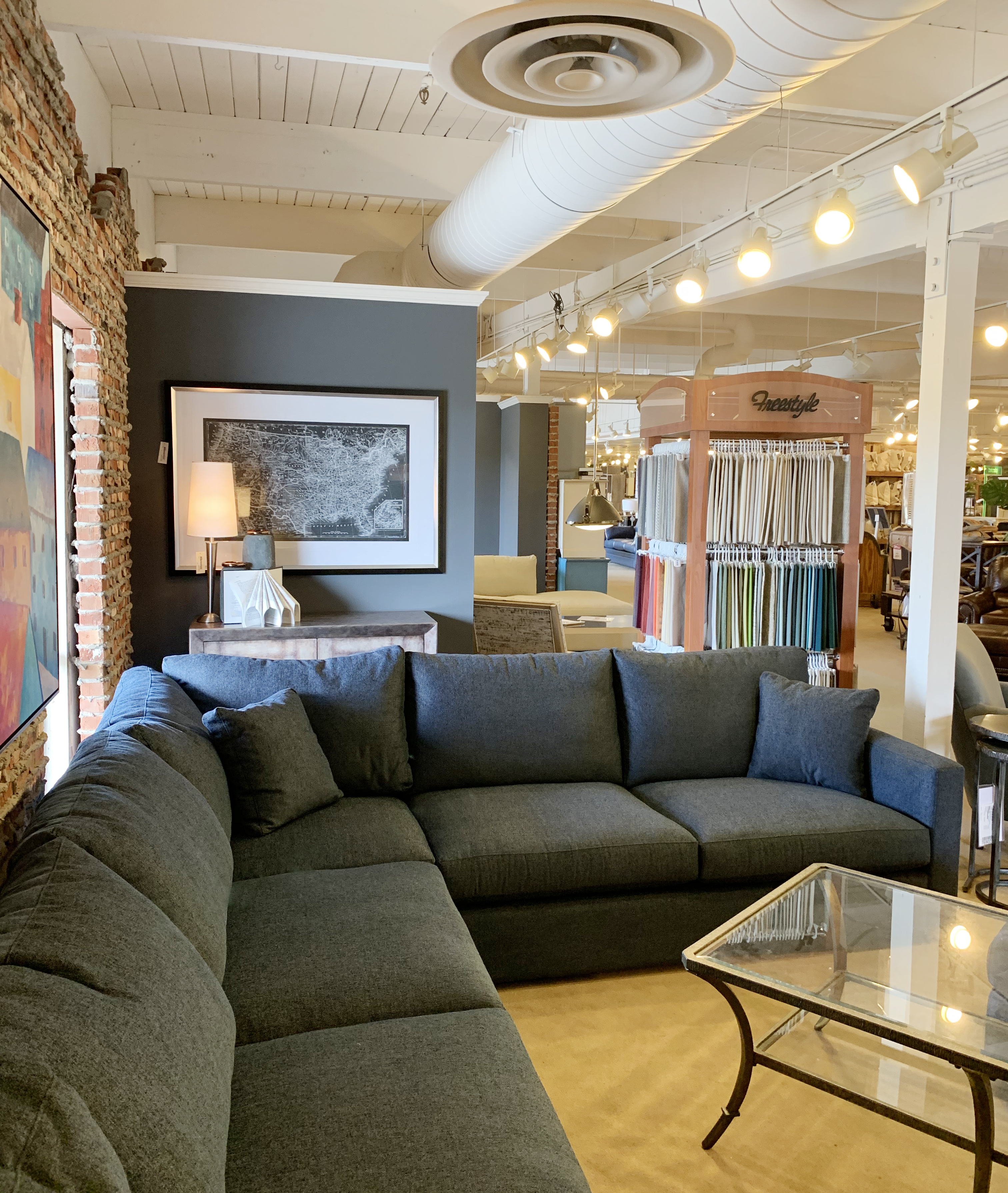
Kittle’s defines custom as “anything that is not as shown. If they go to the swatch rack, the wood boards and wood chips and they do something different than what’s on the floor, then it becomes special order or custom work,” Easter describes. The vast majority is configurable custom, with programs from Daniel’s Amish in bedroom, Canadel in casual dining and Bassett in custom wood, for example. By the inch is “a very small percentage of what we do. Smith Brothers and Bassett both offer by-the-inch, but it’s not necessarily every inch; it’s simpler than what a company like Century offers, and it has to be for our people to sell it on the main floor.”
Curated Couture
“We really put a lot of thought into what is going on our floor,” remarks Daniel Lubner, Chief Executive Officer of South Florida-based Clive Daniel Home. “We are able to provide that instant gratification, but about 60 percent of our sales are custom orders.”
With two showrooms in Naples and Boca Raton, at 85,000 and 70,000 square feet respectively, Lubner says, “We consider ourselves more of a design firm than we do a furniture retailer. We own our own warehouse, our own trucks, and we’ve got the best delivery guys in the world. If you come in on Monday, we can deliver an entire home on Tuesday. But, because we are skewed toward total home solutions and one-stop shopping, our more than 60 designers like to create artwork. They like to use the frames that we show on the floor for inspiration and then they change the welt, the trim, the cord, the fabric and the finish to realize their client’s vision. If a table needs to be two feet longer, a few inches higher, a few centimeters shorter, we work with more than 200-plus manufacturers who understand the custom nature of what we do, vendors who understand that a quarter of an inch truly matters.”
Although there are lines from Spain and Italy in the mix, the vast majority of Clive Daniel Home’s upholstery is domestically made. “An amazing Amish company in the heart of Ohio’s Amish community produces true, custom bench-made designs that we provide to them, and their turnaround time is under two months. Historically, Amish product was thought to be great quality, but lacking in design. This is just the opposite. It’s categorically the best in the industry, end of discussion. Period.”
These abilities insulate the firm at a time when online retail continues to strengthen and grow. “I think the window of the average retailer who doesn’t offer design services is closing,” he posits. “There’s maybe another decade before those retail furniture stores are irrelevant. A few years from now a drone is going to deliver a furniture chip sample and then Amazon or one of those companies is going to back the truck up the following day, so it’s got to be about service. If you’re not focused on service now, you’re probably not going to be relevant much longer. The world is changing and if you’re going to engage a client in a retail trip, it has to be an experience.”
Though he worked for his father, iconic retailer Clive Lubner at Robb & Stucky for years, the executive formulated his view of retail many years ago in an Apple store. “They said, we’re going to take the “B” in retail, which always stood for buy, and turn it into browse. They made it comfortable to be able to walk in and enjoy your experience. So when we started Clive Daniel Home in 2011, we wanted to capture some of that magic, and people feel it’s okay to come in here and just browse. We listen to our clients, what they’re looking to do, and we try to create these couture and custom events as small as a handful of people or as large as 1,000.”
Worth the Wait
Since day one, Cantoni, with several locations in the Dallas marketplace, has been about custom order. “The degree of customization varies. It can be as simple as just changing the fabric or leather on a piece,” says Michael Wilkov, founder and Chief Executive Officer. “But when it comes to customizing, the options are really endless, and clients come to Cantoni because they know we have the capability to take it to a totally different level. A customer who wants something handmade just for them is prepared to wait because they know they will not find it elsewhere. They are either building a new home or under construction and they’re usually planning well in advance. We’re often involved in the design process through the construction phase and so we’re able to actually specify the sizes of products that would be suitable for that home.”
Obviously, he says, “We will sell them a sofa if that’s what someone wants and we have it in stock. But that is not really where the majority of our business is focused. We want the client who is looking for customized design help in furnishing their home. We’re really not selling commodities. From that perspective, we’re very much a design studio.”
That means Cantoni’s design team is often designing a space in conjunction with an architect and construction team. “That’s where customized orders really develop, and the lead time on those types of projects can be anywhere from six to nine months,” he says. 'Those customers typically don’t have an issue with that because they are going to achieve what they wanted. And that’s the key for the upper tier: Providing them with a product they can’t find anywhere else because those customers are simply not going to be satisfied with something they can get in two or three weeks.”



